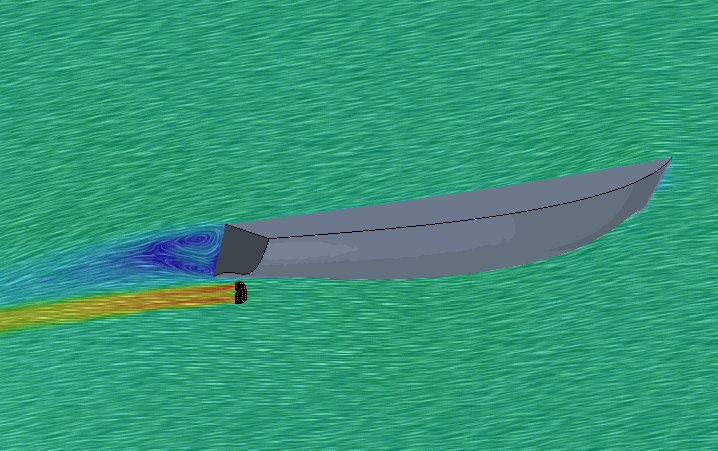Body Force Propeller Method: Marine Self-Propulsion
One of the challenges in marine engineering is to predict the speed with which a ship hull moves through water in response to the thrust supplied by a spinning propeller. Simcenter STAR-CCM+ provides a methodology by which you can predict this speed.
This tutorial simulates the motion of a ship through calm water in response to the thrust produced by its propeller. The propeller is placed centrally at the stern of the ship and rotates at 2300 rpm. Propeller effects are important in these type of simulations, as they can significantly affect the performance of the hull due to the swirl and pressure gradients.
To model self-propulsion, the ship is placed inside a virtual towing tank in full scale. In this tutorial, you apply the Body Force Propeller method of the Virtual Disk model to represent the effect of the propeller on the ship. The Body Force Propeller method allows you to model the propeller and hull interaction without the added cost of modeling the propeller geometry with a fine mesh and smaller time scales. For more information, see Body Force Propeller Method in the User Guide.

Specific models used in this tutorial are:
- Volume of Fluid (VOF) for the water and air. The simulation starts from a flat water surface.
-
Dynamic Fluid Body Interaction (DFBI) for calculating the ship motion in response to fluid forces acting on it. The ship can move forwards or backwards and is free to heave and pitch.
In this simulation, the ship moves accelerates until it reaches a steady velocity. To achieve this steady state in Simcenter STAR-CCM+, the thrust induced by the propeller must balance the drag forces on the ship hull.
The model uses the full geometry of the ship and does not employ symmetry conditions. The following boundary conditions are applied:
- inlets with prescribed velocity and volume fraction at the upstream, top, bottom, and side boundaries
- hydrostatic pressure corresponding to the undisturbed water surface at the downstream boundary of the tank
- walls on the ship hull surface